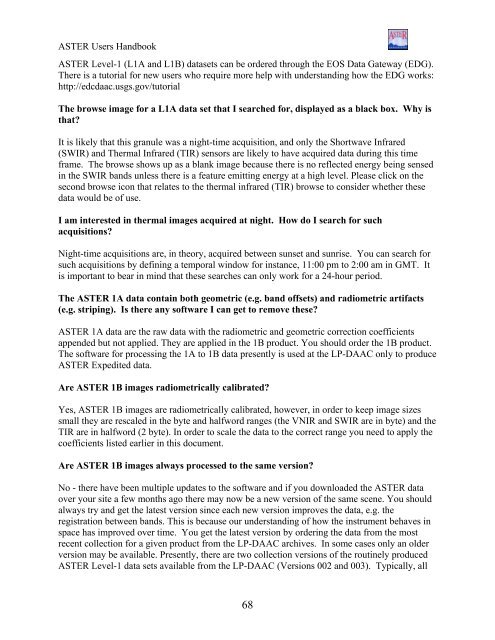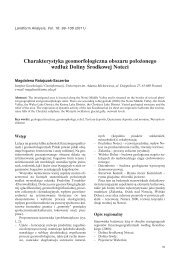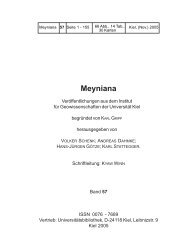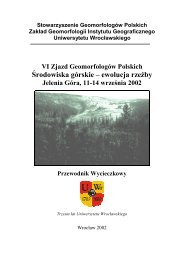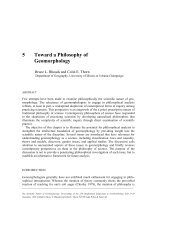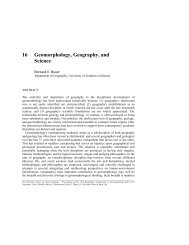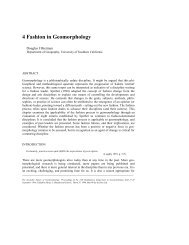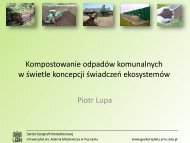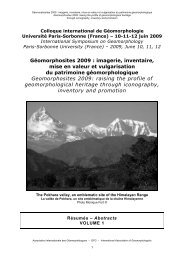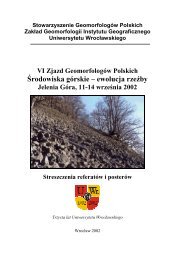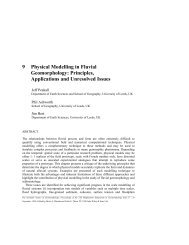ASTER User's Guide - Aster - NASA
ASTER User's Guide - Aster - NASA
ASTER User's Guide - Aster - NASA
You also want an ePaper? Increase the reach of your titles
YUMPU automatically turns print PDFs into web optimized ePapers that Google loves.
<strong>ASTER</strong> Users Handbook<br />
<strong>ASTER</strong> Level-1 (L1A and L1B) datasets can be ordered through the EOS Data Gateway (EDG).<br />
There is a tutorial for new users who require more help with understanding how the EDG works:<br />
http://edcdaac.usgs.gov/tutorial<br />
The browse image for a L1A data set that I searched for, displayed as a black box. Why is<br />
that?<br />
It is likely that this granule was a night-time acquisition, and only the Shortwave Infrared<br />
(SWIR) and Thermal Infrared (TIR) sensors are likely to have acquired data during this time<br />
frame. The browse shows up as a blank image because there is no reflected energy being sensed<br />
in the SWIR bands unless there is a feature emitting energy at a high level. Please click on the<br />
second browse icon that relates to the thermal infrared (TIR) browse to consider whether these<br />
data would be of use.<br />
I am interested in thermal images acquired at night. How do I search for such<br />
acquisitions?<br />
Night-time acquisitions are, in theory, acquired between sunset and sunrise. You can search for<br />
such acquisitions by defining a temporal window for instance, 11:00 pm to 2:00 am in GMT. It<br />
is important to bear in mind that these searches can only work for a 24-hour period.<br />
The <strong>ASTER</strong> 1A data contain both geometric (e.g. band offsets) and radiometric artifacts<br />
(e.g. striping). Is there any software I can get to remove these?<br />
<strong>ASTER</strong> 1A data are the raw data with the radiometric and geometric correction coefficients<br />
appended but not applied. They are applied in the 1B product. You should order the 1B product.<br />
The software for processing the 1A to 1B data presently is used at the LP-DAAC only to produce<br />
<strong>ASTER</strong> Expedited data.<br />
Are <strong>ASTER</strong> 1B images radiometrically calibrated?<br />
Yes, <strong>ASTER</strong> 1B images are radiometrically calibrated, however, in order to keep image sizes<br />
small they are rescaled in the byte and halfword ranges (the VNIR and SWIR are in byte) and the<br />
TIR are in halfword (2 byte). In order to scale the data to the correct range you need to apply the<br />
coefficients listed earlier in this document.<br />
Are <strong>ASTER</strong> 1B images always processed to the same version?<br />
No - there have been multiple updates to the software and if you downloaded the <strong>ASTER</strong> data<br />
over your site a few months ago there may now be a new version of the same scene. You should<br />
always try and get the latest version since each new version improves the data, e.g. the<br />
registration between bands. This is because our understanding of how the instrument behaves in<br />
space has improved over time. You get the latest version by ordering the data from the most<br />
recent collection for a given product from the LP-DAAC archives. In some cases only an older<br />
version may be available. Presently, there are two collection versions of the routinely produced<br />
<strong>ASTER</strong> Level-1 data sets available from the LP-DAAC (Versions 002 and 003). Typically, all<br />
68


